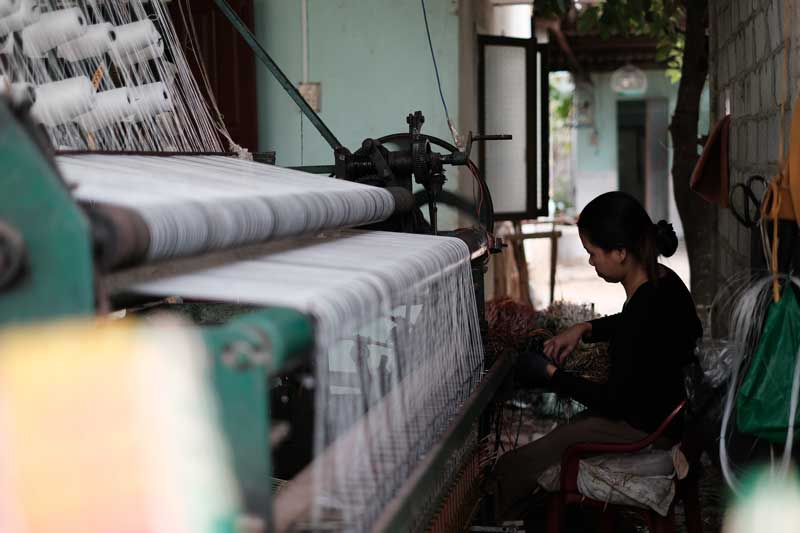
Glimmer of hopes for Indian textiles segment: Outlook for 2024
How 2023 will wrap up or what 2024 will bring, no one can bet on it, says Dr Siddhartha Rajagopal.
Some of the recent policy measures shows that the government is placing its distinct thrust and trust on the country’s labour intensive sector – which makes essential contribution to the national economy through job creation; bringing in valuable foreign exchange; attracting foreign direct investments for advancing the country’s manufacturing and logistics infrastructure; and reviving the socio-economic lives of the people in overall terms.
Era of uncertainties
For quite some time now, the scenario in the textiles sector has been shrouded by high material prices, low export demand and uncertainties stemming out of geopolitical conflicts, reorientation of supply chains and high inflationary pressures.
In February 2022, Russia invaded Ukraine and the conflict continues even as of today, bringing the spectre of war closer to leading economies like Europe and the USA. The invasion led to disruption of supply chains, slowing the demand for goods causing reduction in orders. The situation continues to impact the global economy bringing the leading economies closer to deep recession on account of high inflation and increased interest rates. In fact, a storm of unprecedented global events has reduced the pace of investments in multiple sectors, including the textiles industry.
Hopes beyond the gloom
Amid the gloomy economic forecasts across sectors, there are some glimmers of hope appearing in the textile industry. The implications for companies are clear: focus on resiliency and cost but also take calculated risks for longer-term growth. Textile companies must also seek to understand the changing dynamics of supply chains, the buying patterns in different market destinations and the product profiles in which their businesses operate.
With a world that is hopefully coming to terms with the era of turbulence, things are looking up albeit slowly for the textile industry. A new dawn beckons the Indian textiles sector.
On its part, the Government of India has been taking various initiatives to revive the fortunes of the textile industry. These measures include – giving a push to technical textiles, formulation of the PLI scheme, launch of mega textile parks, signing of FTA’s and MoU’s with many countries, etc. These initiatives, it is hoped, will give the necessary impetus to the Indian textile industry, to realise its full potential.
Modernising the textile industry
The Government has taken several steps to modernise the textile industry, enhance exports and promote FDI on a pan-India basis. Some of these initiatives are:
- Government has approved setting up of Seven Pradhan Mantri Mega Integrated Textile Region and Apparel (PM MITRA) Parks in Greenfield/Brownfield sites with an outlay of Rs 4,445 crore for a period of seven years up to 2027-28.
- Government has approved the Production Linked Incentive (PLI) Scheme for Textiles, with an approved outlay of Rs 10,683 crore, to promote production of Man Made Fibre (MMF) apparel, MMF fabrics and products of technical textiles in the country.
- Government is also implementing various schemes/ programmes such as SAMARTH- Scheme for Capacity Building in Textile Sector, National Handloom Development Programme, Raw Material Supply Scheme, National Handicraft Development Programme, Comprehensive Handicrafts Cluster Development Scheme, Integrated Wool Development Programme etc. to promote and develop indigenous textile sector.
- India has so far signed 13 Free Trade Agreements (FTAs) including recently concluded Comprehensive Economic Partnership Agreement with UAE and Economic Cooperation and Trade Agreement with Australia; and 6 Preferential Trade Agreements with various trading partners. Government has entered into negotiations for FTA with trading partners such as the United Kingdom, European Union, Canada for enhancing market access of Indian products, including textiles, keeping in mind the national interest and domestic sensitivities.
- Market Access Initiative scheme provides financial support to various export promotion councils and trade bodies engaged in promotion of textiles and garments exports, for organising and participating in trade fairs, exhibitions, buyer-seller meets etc.
- Government has put in place liberal and transparent investor-friendly Foreign Direct Investment (FDI) policy. 100 per cent FDI is allowed in the textile sector under the automatic route. The amount of investment brought through FDI in the textile sector from 2017-2022 was $ 1522.23 million.
- Further, the announcements made in Union Budget 2023-24 shows the government’s priorities for India’s textiles sector.
The Government has accorded a special focus to Extra-Long Staple (ELS) cotton. Five new HS codes identified for further classification of cotton as per staple length, will help in calibrating policy support for the segments which are import dependent or need further incentivisation.
Cotton cultivation has increased by 5 per cent to 125.02 lakh hectare as against 119.10 lakh hectare during last year. Brand named ‘Kasturi Cotton India’ for Indian cotton has been launched to encourage mechanised harvesting of cotton, improving quality of cotton and to reduce labour cost.
Along with the sharpened policy measures, higher allocations under RoDTEP, RoSCTL and ATUFS aim to provide relief to the textile sector which has been reeling under a long drawn period of uncertainties.
Cotton textiles sector under TEXPROCIL.
TEXPROCIL is the first ever Export Promotion Council established in 1954 for undertaking various measures for the growth of exports of Cotton textiles including raw cotton, cotton yarn, cotton fabrics and cotton home textiles range.
The Council’s membership includes very large integrated mills with billions of dollar turnover to small units in the rural areas making specialty products. The Council provides services to members including composite mills, spinning units, knitting units, process houses and merchant exporters located in the textile clusters across the country.
The Member companies continue to derive benefits through various government schemes under the wide ambit of activities undertaken by the Council including group participation in international exhibitions, buyer seller meets in India and overseas, visit of overseas delegations, etc. The growing quantum of exports bears testimony to the Council’s recognition as the ‘International face of Indian Cotton Textiles’.
Apart from undertaking several export promotion measures, the Council has been designated as the implementing agency for Branding, Certification and Traceability initiatives under the brand name ‘Kasturi Cotton India’ (KCI) for cotton grown on Indian farms.
Towards this end, TEXPROCIL has signed a Memorandum of Understanding with Cotton Corporation of India. The KCI project has further aims to provide brand recognition to cotton grown on Indian soil along with ensuring quality and better remunerative prices for the farmers.
The Council has also introduced the General Certificate of Conformity (GCC) program that will ensure testing, certification and traceability of cotton grown in India. The GCC program helps the retailers/brands to meet the requirements of the US legislation imposing restrictions on the use of cotton produced in the Xinjiang region of China.
Outlook 2024 and beyond
The Indian textile industry is looking forward with some optimism in the latter half of the current fiscal year 2023-24 and beyond. The focus on investments, skill development and labour law reforms by the Government have provided the much-needed boost to the confidence of the business community to further invest, expand and grow the textiles industry. The encouraging signs provide reassurance of the commencement of an excellent period for the revival and growth of the textile and apparel sector in India.
Overall, the textiles and apparel industry has an ambitious target of achieving the target of $ 250 billion domestic textiles production and $ 100 billion exports by 2030. This includes exports of cotton textiles from India, under the purview of TEXPROCIL, being projected to reach $ 24 billion at a CAGR of 13 per cent by the year 2029-30.
The industry is confident about revival of demand, based on the expected boost in exports on account of the recently concluded FTAs with Australia & UAE. The signing of FTAs with Canada, UK & EU is also expected to provide further impetus to demand for Indian textile and apparel products. The pathway to success in the textiles sector is mainly on diversification of exports through new products and markets along with increasing value addition and promoting innovation and R&D activities.
The Indian textile and apparel industry has been highly appreciated across the world on account of its exquisite craftsmanship, design skills and flexible production processes capable of handling deliveries in small lots to bulk lots at the same time. The coming together of the Government and the industry by virtue of supportive policies and the entrepreneurial zeal can contribute positively to the national aspiration of becoming the most preferred sourcing and manufacturing destination in the world.
About the author:

Dr Siddhartha Rajagopal is the Executive Director of the The Cotton Textiles Export Promotion Council of India (TEXPROCIL). He has experience of over two decades in matters relating to international trade in textile and clothing. Having acquired a Master’s Degree in Political Science with specialization in international economic relations, joined the TEXPROCIL in 1992 after serving the Apparel Export Promotion Council (AEPC).




